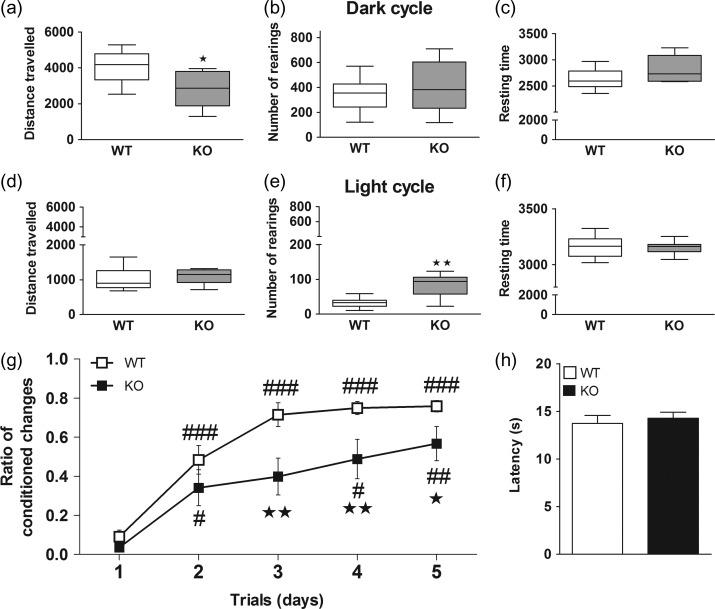Figure 2.
Assessment of circadian activity, emotional working memory and nociception. The circadian activity was evaluated in the PHECOMP cages in male WT (n = 13) and KO (n = 9) mice. Distance traveled, number of rearings and resting time during the dark (a–c) and light (d–f) cycles are shown. Nonparametric data are graphed with box and whiskers plots, where the line indicates the median, the box indicates the 25–75th percentile and the whiskers indicate the 5–95th percentile. *P < 0.05, **P < 0.01 versus WT group (Mann–Whitney test). Emotional memory was evaluated in the active-avoidance test. The ratio of conditioned changes is shown for male WT (n = 13) and KO (n = 8) mice (g) #P < 0.05, ##P < 0.01, ###P < 0.001 versus day 1 of same genotype, *P < 0.05, **P < 0.01 versus WT mice. Nociceptive response was assessed in the plantar test measuring the paw withdrawal latency (h). See Supplementary Table S5 for statistical values.

